Table of Contents
Introduction
Industrial decor is a captivating interior design style that brings the rugged charm of old factories and warehouses into modern homes. It focuses on raw, unpolished materials like exposed brick walls, concrete floors, and metal accents, blending them with contemporary elements to create a timeless aesthetic. Rooted in functionality and minimalism, industrial decor celebrates imperfections, turning scratches, textures, and aged materials into key design features. Its appeal lies in its versatility—whether you’re furnishing a compact apartment, designing a spacious loft, or refreshing a single room, this style offers endless possibilities. From urban chic to eco-friendly innovations, industrial decor continues to evolve, proving its relevance in modern interior design.
Whether you’re drawn to its practicality, its ability to combine vintage and modern vibes, or its unpretentious elegance, industrial decor is an excellent choice for those seeking a design style that stands out. In this guide, we’ll walk you through the key elements of industrial decor, practical applications for every room, and tips to achieve this stunning aesthetic without breaking the bank
1. What is Industrial Decor? A Complete Beginner’s Guide
Industrial decor is all about embracing raw, unfinished elements to create a chic, utilitarian aesthetic. It draws inspiration from old factories and warehouses, focusing on exposed brick walls, metal pipes, and concrete floors. The beauty lies in showcasing imperfections—scratches, textures, and age marks become part of the charm. Key pieces include steel furniture, Edison bulb lighting, and wooden accents. This style celebrates functionality with open layouts and minimal embellishments. It’s ideal for those who love a mix of vintage and modern vibes, creating a space that’s stylish yet unpretentious.
2. Urban Chic: The Modern Twist on Industrial Design
Urban chic blends the raw, edgy appeal of industrial decor with modern sophistication. Think metal finishes paired with plush furniture, or concrete walls softened by pastel cushions. This style keeps the industrial foundation—like exposed ducts and reclaimed wood—while incorporating sleek, contemporary touches. For example, add a velvet armchair or marble-top coffee table to balance the ruggedness. Urban chic also embraces pops of color, such as teal or mustard, to break the monotony of grey and black. It’s a harmonious mix of comfort and style, perfect for urbanites seeking a cozy yet industrial aesthetic.
3. The Evolution of Industrial Style: From Factories to Homes
Industrial decor traces its roots back to the 19th-century Industrial Revolution, when factories prioritized function over form. With time, these abandoned spaces were converted into homes, retaining their raw materials. Designers saw beauty in the juxtaposition of ruggedness and elegance. In the 20th century, loft apartments in cities like New York became synonymous with industrial chic. Today, the style has evolved to include polished finishes and modern touches. This evolution celebrates history while adapting to contemporary tastes, making it one of the most versatile interior styles.
4. Industrial Kitchen Design: Combining Functionality with Style
Industrial kitchens emphasize both style and practicality, making them perfect for cooking and entertaining. Stainless steel appliances, open shelving, and butcher block countertops are staples. Exposed pipes and vents add character, while pendant lights with Edison bulbs provide a warm glow. Concrete floors or brick backsplashes enhance the industrial vibe, and leather stools bring a touch of sophistication. Incorporate a mix of matte black fixtures and reclaimed wood cabinetry for a balanced look. These kitchens are durable, functional, and incredibly stylish—ideal for anyone who loves a professional yet welcoming cooking space.
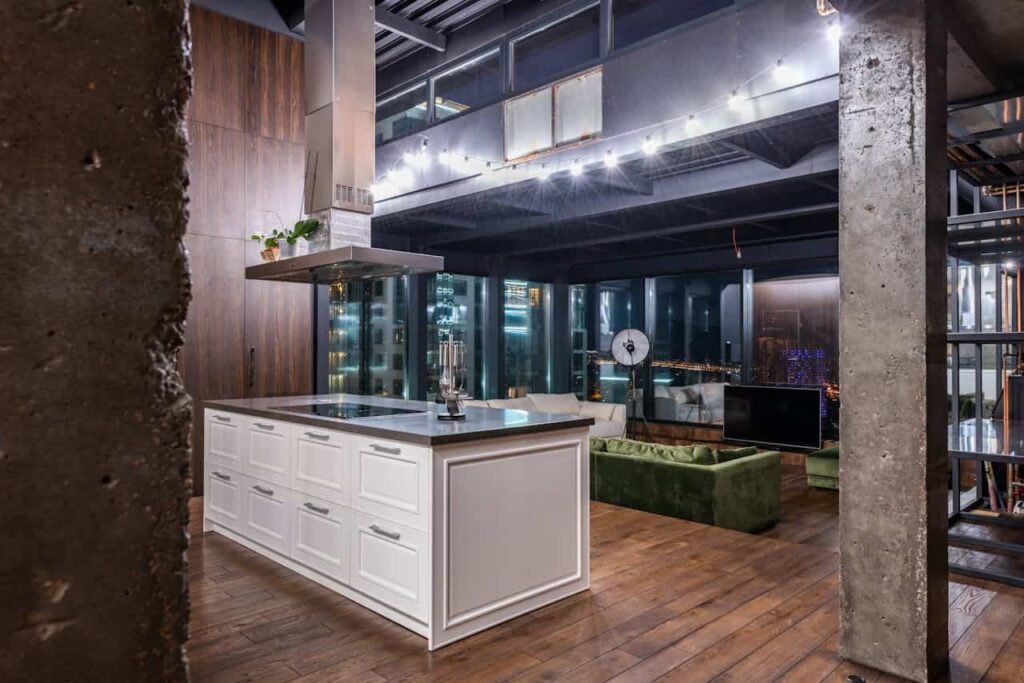
5. Loft Living: Industrial Decor Ideas for Small Apartments
Transforming small apartments with industrial decor is all about maximizing space while maintaining a stylish edge. Opt for multifunctional furniture, like a bed with built-in storage or a dining table that doubles as a desk. Use open shelving to display your favorite items without overcrowding. Mirrors with metal frames can make the space feel larger, and neutral color schemes keep it airy. Add character with exposed pipes, brick walls, or concrete accents. Accessories like vintage posters, wire baskets, and Edison bulb string lights can tie it all together, creating a cozy yet edgy loft-style vibe.
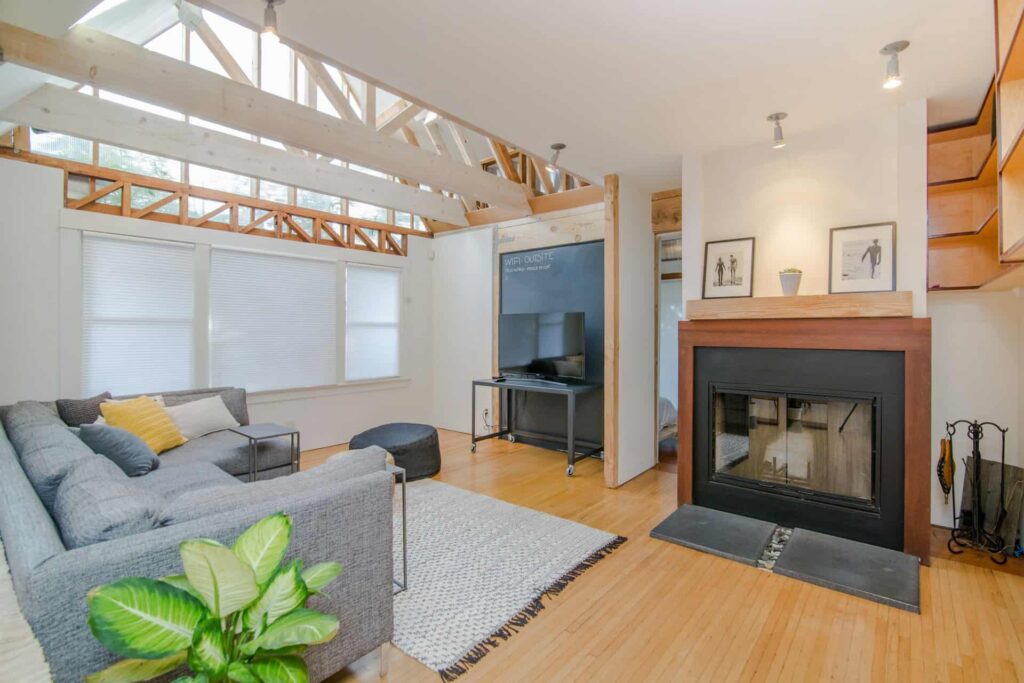
6. Industrial Bathrooms: How to Nail the Raw and Edgy Look
An industrial bathroom combines rugged charm with modern functionality. Start with a concrete or stone sink paired with black matte fixtures for a bold statement. Exposed plumbing and metal accents, like towel racks or mirrors with steel frames, enhance the industrial vibe. Use subway tiles for the walls and pair them with textured concrete floors or wood for warmth. Lighting plays a key role—opt for cage-style wall sconces or Edison bulb fixtures. Add finishing touches like metal soap dispensers or reclaimed wood shelving to complete the look. This style creates a striking yet cozy space for unwinding.
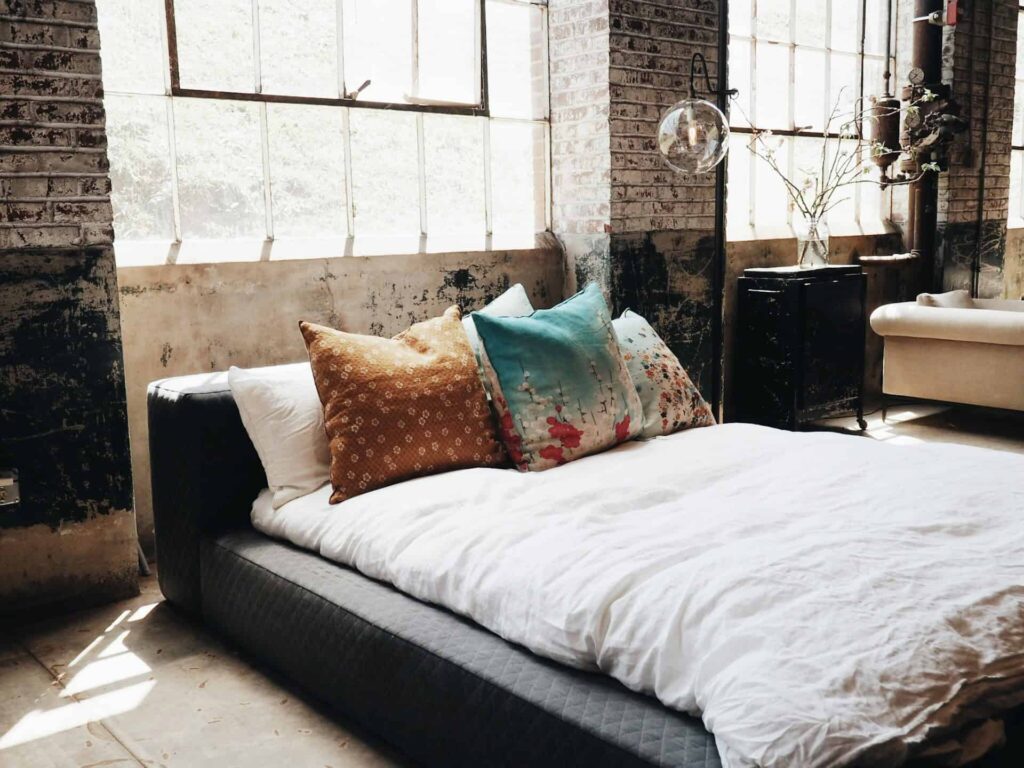
7. DIY Industrial Decor Projects for Every Room
DIY industrial decor projects are perfect for adding a personal touch to your home. Create a pipe shelf using galvanized pipes and wooden planks—ideal for storing books or plants. Transform an old wooden door into a rustic sliding barn door. Repurpose industrial items like metal crates into storage units or coffee tables. Try making a pendant light fixture using a metal cage and an Edison bulb. For art, stencil bold designs onto reclaimed wood. These projects are cost-effective, fun, and bring authenticity to your decor, allowing you to craft a unique industrial look that tells a story.
8. Affordable Ways to Achieve the Urban Industrial Look
Achieving the industrial look doesn’t have to break the bank. Faux brick wallpaper is a budget-friendly alternative to exposed brick. Scour thrift stores for vintage metal chairs, old trunks, or industrial-style light fixtures. DIY projects, like creating furniture with reclaimed wood and metal pipes, are cost-effective and stylish. Use inexpensive materials like plywood or concrete to craft tabletops or shelves. Add finishing touches with affordable accessories, like metal clocks, Edison bulbs, and wire baskets. Combining creativity with second-hand finds allows you to capture the urban industrial vibe on a budget.
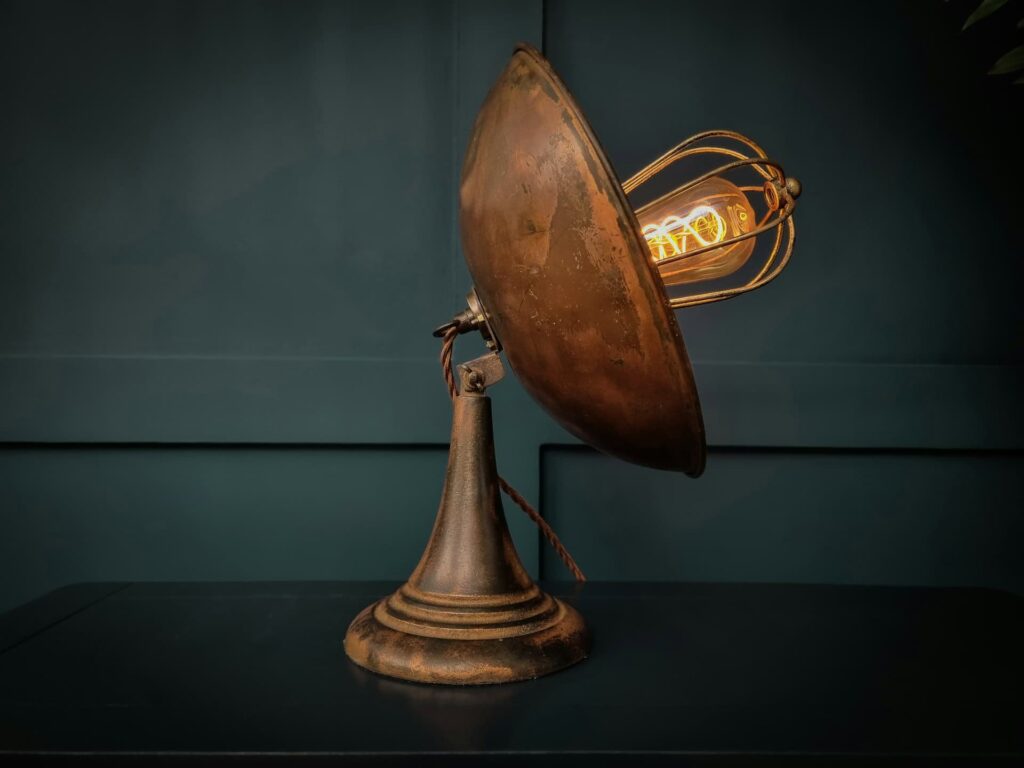
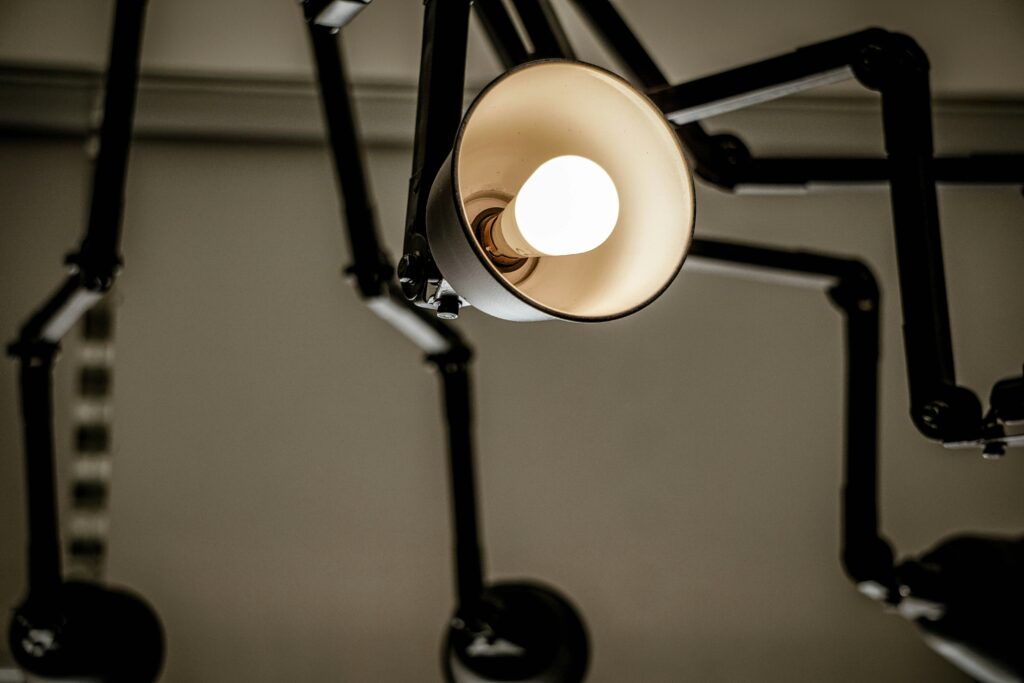
9. Raw Materials in Industrial Design: The Ultimate Guide
Industrial design is defined by its use of raw materials, each adding its own character. Exposed brick walls offer warmth and texture, while concrete floors exude urban minimalism. Metal—whether steel, iron, or copper—adds a rugged edge, commonly seen in furniture, light fixtures, and accents. Reclaimed wood is essential for softening the harshness of metal and concrete, bringing a natural, rustic touch. Glass adds a modern twist, often used in partitions or tabletops. These materials, in their unrefined glory, celebrate authenticity, making industrial design a timeless and versatile choice.
10. Mixing Textures: Combining Metal, Wood, and Leather in Industrial Decor
Texture mixing is key to balancing industrial decor’s edgy aesthetic. Pair cold, hard metals like steel or iron with the warmth of reclaimed wood to create visual harmony. Add leather furniture, like a vintage sofa or chair, to introduce comfort and sophistication. Textured fabrics—like linen or burlap—can be used for curtains or cushions to soften the space further. Incorporating a variety of finishes, such as matte, shiny, or distressed, adds depth and interest. This mix of textures makes industrial spaces feel inviting while retaining their bold, edgy character.
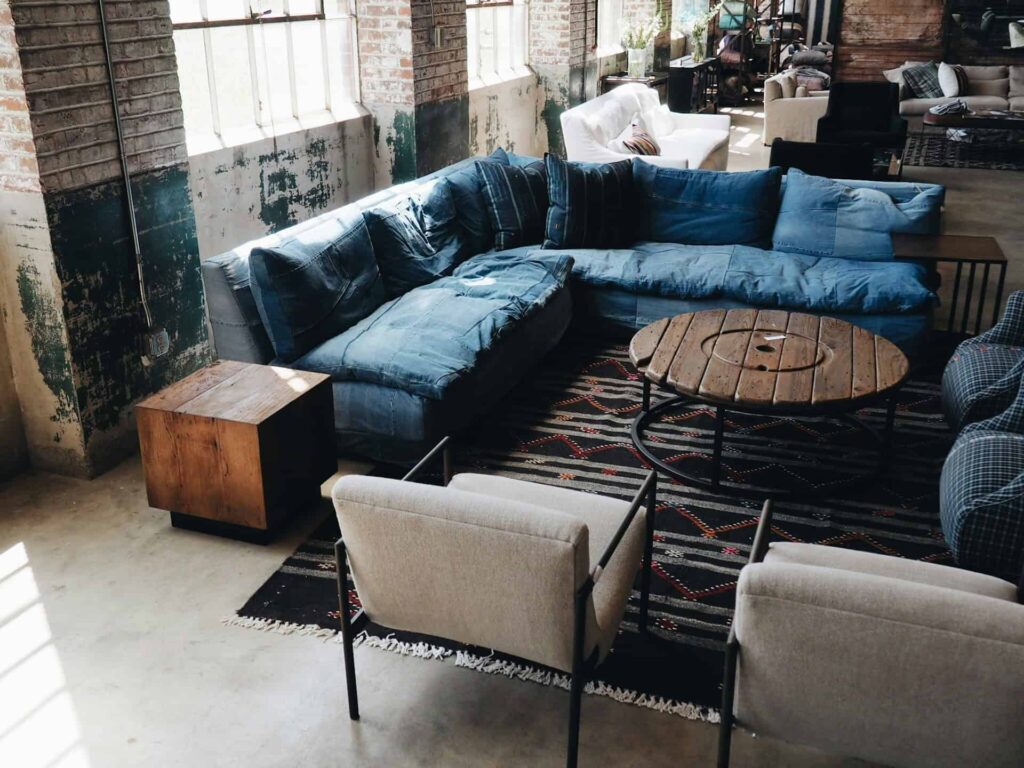
11. Industrial Lighting: Top Fixtures to Brighten Your Space
Lighting is crucial in industrial decor, setting the mood while reinforcing the style. Pendant lights with metal shades or cages are iconic choices, perfect for kitchens or dining areas. Edison bulbs, with their warm, vintage glow, bring charm and character. Floor lamps with adjustable arms add practicality and style to living rooms or reading corners. Wall sconces with exposed wiring enhance the raw aesthetic, while oversized industrial chandeliers make a bold statement. For a modern touch, mix materials like metal and glass in your fixtures. Industrial lighting creates the perfect balance of function and ambiance.
12. Urban Industrial Accessories: Must-Have Pieces for Your Space
Accessories are the finishing touch in urban industrial decor. Think vintage clocks, metal-framed mirrors, or wire baskets for storage. Add character with industrial art, like black-and-white cityscape photos or abstract metal sculptures. Textiles like patterned rugs or leather cushions introduce warmth and texture. Industrial-style vases, made from concrete or metal, pair beautifully with greenery to soften the space. Vintage trunks or crates can double as storage and decor. These accessories reflect the urban industrial vibe, blending form and function seamlessly for a polished yet lived-in look.
13. Eco-Friendly Industrial Design: Sustainable Materials for Urban Spaces
Sustainability meets style in eco-friendly industrial design. Opt for reclaimed wood furniture, which carries a unique history while reducing waste. Use recycled metal for shelving, light fixtures, or decor accents. Concrete, a staple of industrial interiors, can be sourced sustainably or replaced with eco-alternatives like polished rammed earth. Upcycled items, such as old factory parts or vintage machinery, make stunning focal points. For soft furnishings, choose natural, organic fabrics like hemp or linen. Adding plants not only softens the industrial look but improves air quality. This approach creates a chic, conscious, and sustainable industrial space.
14. Industrial Meets Nature: Incorporating Plants in Urban Spaces
Plants breathe life into industrial spaces, softening their rugged appeal. Use bold greenery like rubber plants, monstera, or fiddle leaf figs to contrast with raw materials. Metal planters or concrete pots seamlessly blend with the industrial aesthetic, while hanging plants add depth and visual interest. Consider vertical gardens for a dramatic touch or a simple row of succulents for smaller spaces. Integrate plants into industrial-style furniture, like bookshelves with built-in planters. These natural elements balance the coldness of metals and concrete, creating a harmonious blend of urban industrial style and organic beauty.
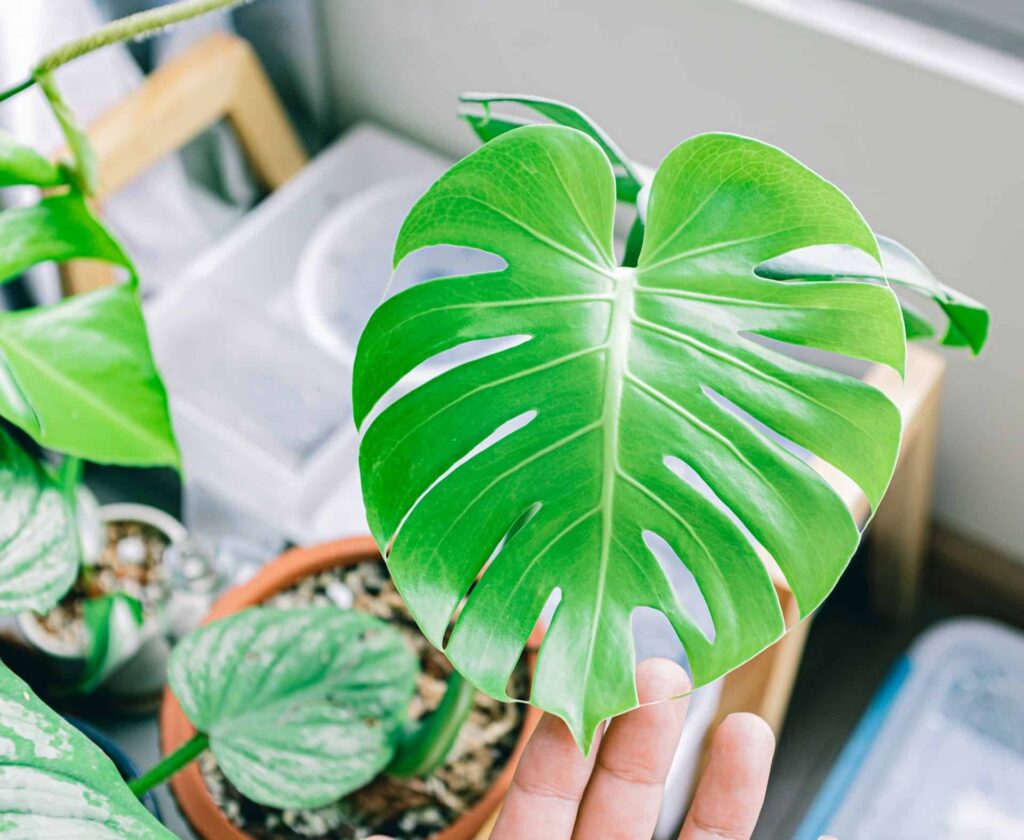
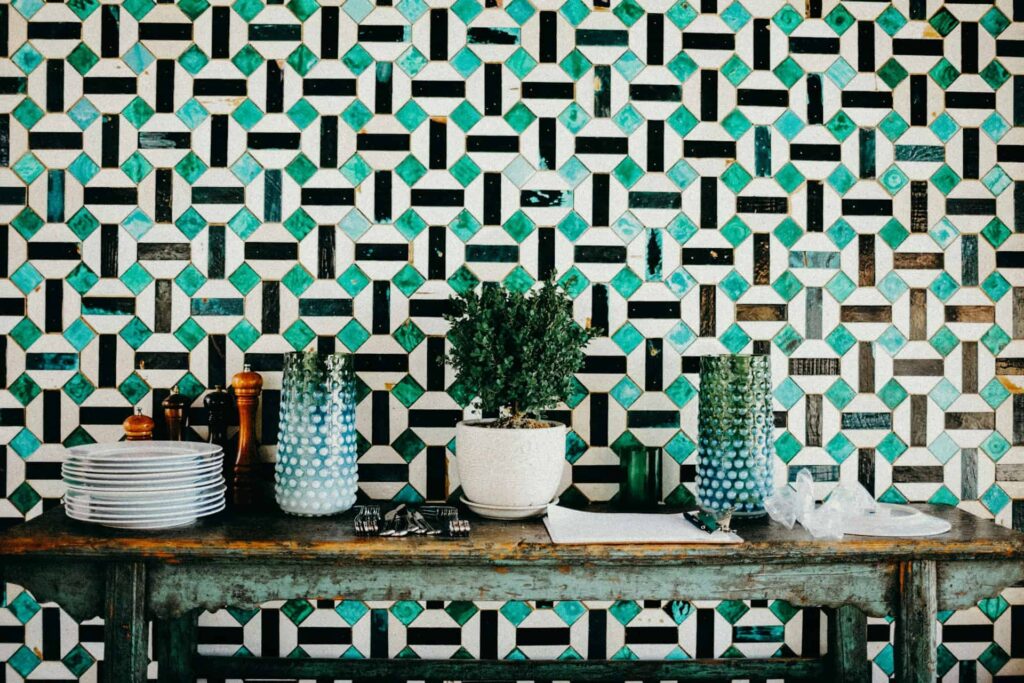

15. Choosing the Perfect Color Palette for Industrial Spaces
The industrial palette revolves around neutral tones that emphasize raw materials. Shades of grey, black, and white are foundational, creating a sleek, minimalist base. Warmth can be introduced through earthy hues like rust, tan, or deep brown, echoing the tones of wood and leather. Metallic finishes—steel, bronze, or copper—add texture and shine. To modernize, incorporate muted colors like sage green or navy blue for a fresh twist. Pops of vibrant colors, such as mustard yellow or brick red, can act as accents, breaking the monotony while keeping the industrial vibe intact.
16. Industrial Finishes: Choosing the Right Paints, Metals, and Stains
Finishes are key to achieving the authentic industrial look. Opt for matte or satin finishes on walls to mimic the natural textures of concrete or plaster. For furniture, choose distressed wood with visible grain, finished in a matte stain to highlight its rawness. Metals like iron or steel look best when left unpolished, showcasing their natural imperfections. Copper or brass accents, with a patina finish, add a vintage touch. Concrete surfaces can be polished for a modern edge or left rough for an authentic feel. These finishes enhance the rugged yet refined charm of industrial decor.
17. Stunning Industrial Loft Designs to Inspire Your Home
Industrial lofts are the epitome of urban sophistication. Highlight designs featuring open-concept layouts with towering ceilings, exposed ductwork, and large windows. Showcase creative ideas like using factory doors as partitions or turning scaffolding into shelving. Highlight spaces that balance raw materials—such as brick walls and concrete floors—with cozy furniture like oversized leather sofas or textured rugs. Show inspiring uses of lighting, from oversized pendant fixtures to soft under-cabinet LEDs. These examples demonstrate how industrial design can be tailored to create spaces that are functional, stylish, and brimming with character.
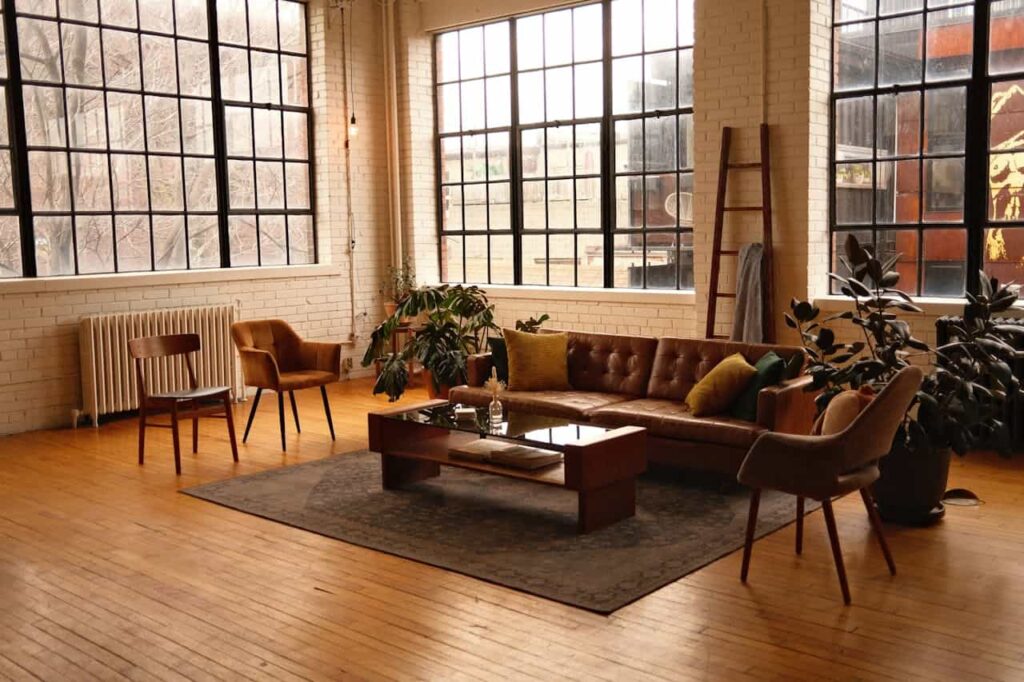
18. Before and After: Transforming Spaces with Industrial Decor
“Before and After” stories showcase the transformative power of industrial decor. Start with a dull, cluttered space and show how elements like exposed brick, industrial lighting, and reclaimed wood can completely redefine it. Share examples of how adding vintage furniture or repurposing materials brings character to a room. Highlight clever layouts, like creating zones with open shelving or using rugs to anchor spaces. Include budget-friendly tips, like DIY projects or thrift store finds. These makeovers not only inspire but also demonstrate the practicality of industrial design for everyday living.
Conclusion
Industrial decor is more than just a design trend—it’s a lifestyle that values authenticity, creativity, and functionality. By incorporating raw materials, bold textures, and versatile accessories, you can create spaces that are both stylish and inviting. Whether you’re designing a sleek industrial kitchen, a cozy loft, or an edgy bathroom, this aesthetic offers endless opportunities for customization and personal expression.
The beauty of industrial decor lies in its adaptability. From blending vintage charm with modern sophistication to embracing eco-friendly materials and nature-inspired elements, this style continues to inspire homeowners around the world. Whether you prefer a minimalist approach or a layered, eclectic vibe, industrial decor can transform your space into a timeless and character-filled retreat.